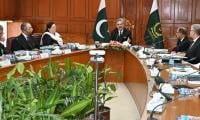Schools should be reopened only when it is safe for students. Going back to school will probably look a little different from what you and your child were used to before the pandemic onslaught.
In the previous article on the subject (‘Are we really ready to open schools?’ (August 22), some light was thrown on the key issues associated with the reopening of schools. In this connection, reference was also made to some facts about the spread and reported fatality rate of the coronavirus amongst school-aged children and to some of the crucial lessons to open schools from several countries primarily based on the available evidence.
To recap, Unicef and the WHO have issued guidelines to operate schools under Covid conditions. The evidence is based on studies from around the world and these guidelines suggest that providing a safe environment is dependent on the compliance of an exhaustive list of SOPs – in particular, social distancing within school premises, frequent hand sanitisation, covering the face with a cloth mask, daily cleaning/sanitisation of classrooms and school premises, and effective use of information, education and communication tools.
From a purely data-driven approach, the degree of compliance or non-compliance of these SOPs in a post-Covid school seems to determine whether it’s safe to reopen schools. Now whether our education systems can implement these SOPs with the existing ground realities needs to be carefully assessed.
While looking at the data of reopening strategies from South Africa to Finland to the Americas and so on, some encouraging patterns emerged. Together, they suggest keeping the student groups small to ensure social distancing. Notably, SOPs of social distancing require that students must be six feet away from each other in the classroom and during the breaks.
Because of the overcrowded classrooms in Pakistan, however, implementation of the principles of social distancing within school premises apparently seems beyond the control of school management. A large number of classrooms in Pakistan accommodate more than 120 students against a permissible capacity of a maximum of 50 students, which is a necessary condition to allow maintenance of a distance of six feet.
The situation is worse in schools where additional overcrowding emanates from multigrade classrooms at the primary level. Multigrade teaching is a situation in which one teacher has to teach many grades under one roof, all at the same time. Multigrade is caused due to lack of teachers and/or classrooms. There are about 40 percent multigrade classrooms in Pakistan.
To deal with the challenge of overcrowding, the government plans to run schools in multiple shifts. To cope with the pressure of multiple shifts, they would need thousands of additional teachers and classrooms. The government has already banned any new recruitments because there is no money to finance new recruitments.
Some development partners may provide funding for the construction of classrooms, but any such additions are likely to be on a very limited scale. However, the proposed enhancement of facilities is prone to serious delays due to time that the partners may need for their internal approvals and also the time required to construct any number of rooms. There have been some proposals to provide tents to make up for the shortage of classrooms. How practical will that be in view of the hot weather in most parts of Pakistan? Probably, not very!
A few countries such as Finland and Sweden have implemented two shifts per day to resume academic activities in schools. Conversely, we cannot forget that they operate in different working conditions. Indeed, they do not suffer from the dilemma of overcrowding. Their average class consists of 20 students. They also use parks and open spaces to run classes which they can afford to because of the pleasant temperature during summers.
More importantly, any solution to resume academic activities in schools cannot be implemented without the support of teachers. Running schools in shifts will at least double their workload. How willing the existing teachers would be to work extra hours has not yet been discussed with them. Teacher unions in other parts of the world have raised eyebrows on increased working hours during the pandemic. For example, the Copenhagen Teacher Association in Sweden raised considerable concerns over dividing classes into smaller groups because that increased teachers’ working hours. Recently, in the US, teachers registered complaints about increased working hours while they were teaching online classes.
In addition to the above, unlike other workforces in Pakistan, school staff in the education departments may have a relatively high number of older people. For instance, according to the Education Management Information System of Khyber Pakhtunkhwa, more than 60 percent of primary school headteachers in KP are more than fifty years old. God forbid, these staff members may have underlying health conditions, such as diabetes, cardiovascular and respiratory tract related complications. Based on the available data about the effects of Covid-19, this may add to their vulnerability of becoming critically ill in case they contract the virus.
By the same token, regular disinfection of school premises and complete personal hygiene of students is essential to restrict the spread of Covid-19. Unicef and WHO guidelines suggest that the disinfection exercise must be carried out at least twice a day. Disinfection in schools is not just confined to the classroom floor. It also includes a large amount of furniture, washrooms, walkways, verandas, and utensils. School managements would be seriously challenged around regular disinfection of their premises due to the lack of dedicated cleaning staff.
Washing hands frequently is another important measure which helps in the effective containment of the virus. Those who have seen the toilets of government schools are well aware of the quality of hygiene which is maintained in most of these facilities. Likewise, government schools do not have enough handwashing spaces to accommodate a large number of students frequently during the day.
Installation of additional handwashing stations would require additional funds. It would also require scalable, affordable and flexible handwashing space models. The system has sufficient capacity to erect affordable handwashing spaces provided they have funds and appropriate approval at the right time. Any delays in the provision of funds and administrative approval may have serious consequences for students.
This indeed is an unprecedented situation and perhaps there are no easy solutions to this gigantic problem ahead. Before making a final decision to bring children back to school, the government may evaluate and mull over all these important considerations. They need to be strategically planned and prioritized in order to overcome the learning loss of children.
Indeed, the health and safety of children must be of prime importance, and the education departments must ensure that all the risks related to them have been identified and a robust mitigation strategy has been developed and comprehensively communicated. We need to see what lies ahead, and what are some of the practical strategies that the government must figure out to overcome system-wide fundamental limitations.
To be continued
(The writer is a freelance education policy, management and reform consultant.)
Email: aahmadbilal4@gmail.com
Today on July 11, Pakistan is completing 75 years of becoming a member of the IMF. Historically, Pakistan at the time...
Flames and smoke rise from a line of trees as a wildfire burns at the Dadia National Park on the region of Evros,...
The Election Commission of Pakistan building in Islamabad. — AFP/File“We must never forget that it is a...
A representational image showing a child vendor selling face masks. — Reuters/FileThe World Bank’s 2025 assessment...
The State Bank of Pakistan building in Karachi. — SBP website/FileThe republic never designed its regulators to be...
Israeli Merkava tanks are positioned in the upper Galilee in northern Israel near the border with Lebanon on October...







